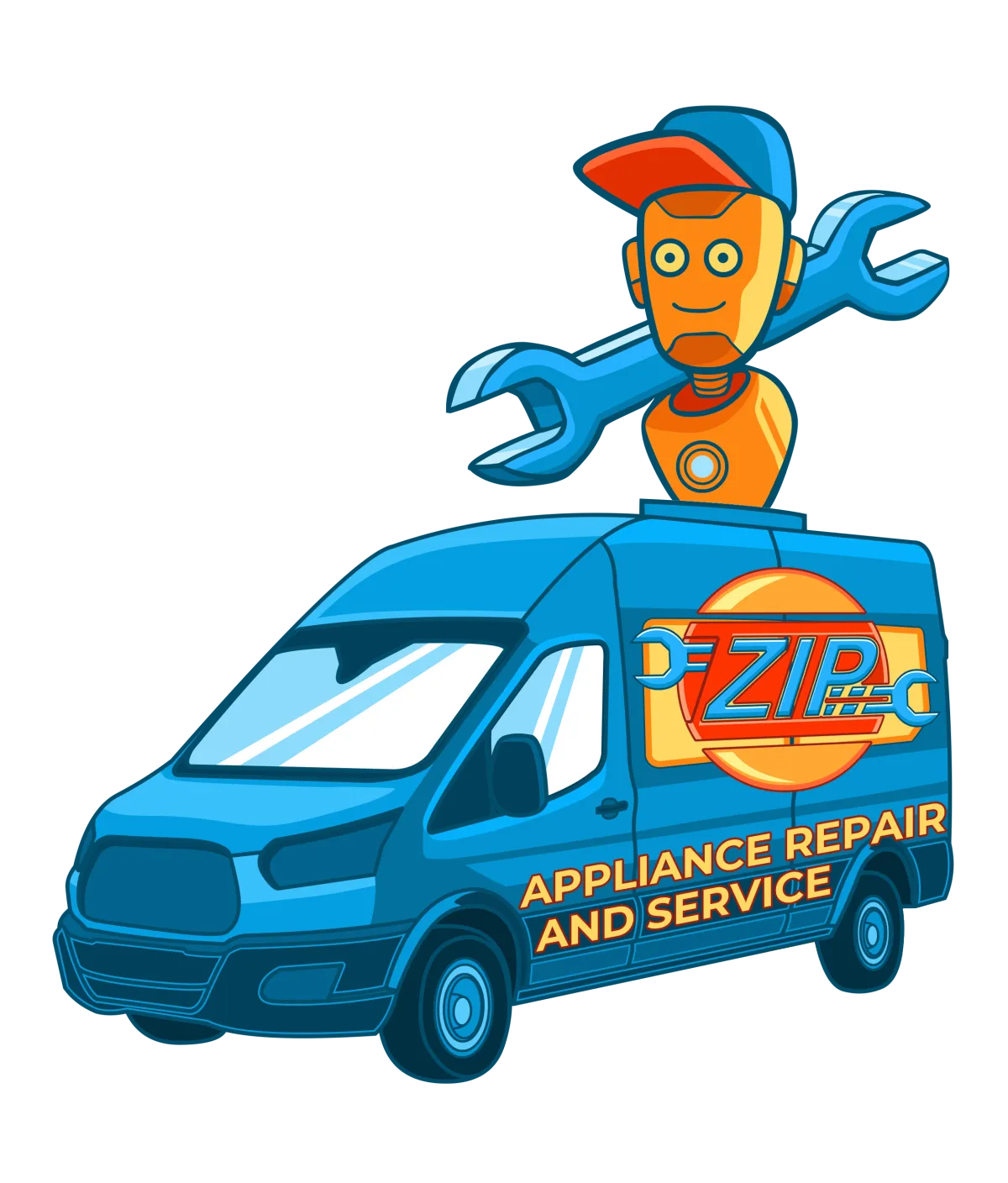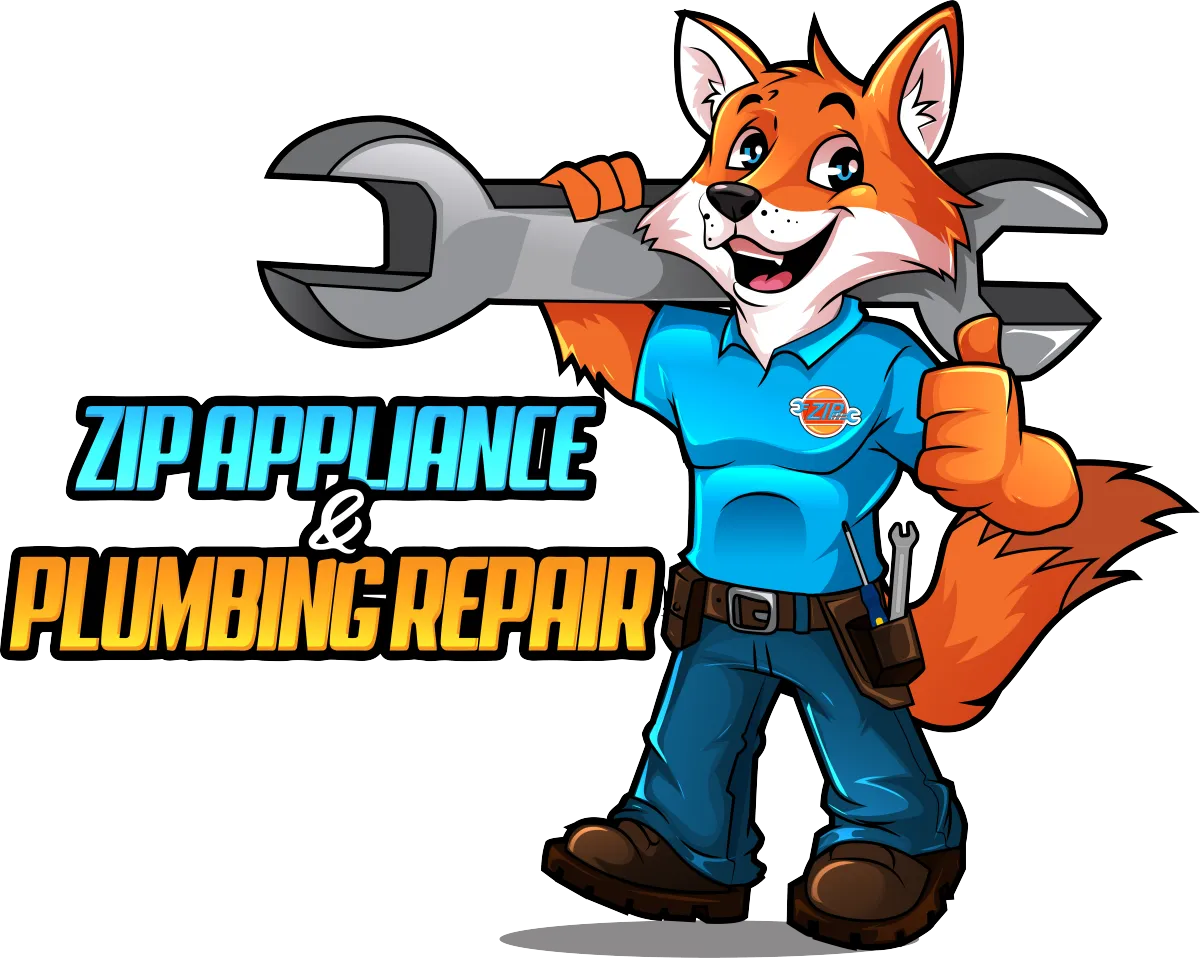Phone: (559) 272-4265
Appliance Repair Tips For Bakersfield, CA Residents

Most Common Whirlpool Washing Machine Issues You Should Know
"Unlock the secrets to a hassle-free laundry day by understanding the most common Whirlpool washing machine issues you should know. Your guide to smooth and efficient washing awaits!" - Appliance Boss
Overview of Whirlpool Washing Machines
Whirlpool washing machines are renowned for their reliability, efficiency, and advanced features. With a history of innovation and quality, these appliances have become a staple in households worldwide. From top-loaders to front-loaders, Whirlpool offers a range of models designed to meet various needs and preferences. However, like all machines, they are not immune to issues. Understanding these common problems and their solutions can help you maintain your washer’s performance and extend its lifespan.
Importance of Understanding Common Issues
Knowing the typical issues that can arise with your Whirlpool washing machine is crucial for several reasons. Firstly, it empowers you to troubleshoot minor problems before they escalate into costly repairs. Secondly, it enhances your ability to maintain the machine effectively, ensuring it runs smoothly for years to come. Lastly, being informed can help you decide when professional intervention is necessary, saving you time and money in the long run.

Benefits of Early Troubleshooting
Addressing issues as soon as they appear can prevent further damage to your washing machine. Early troubleshooting helps in maintaining the efficiency of the appliance, reducing energy consumption, and avoiding inconvenient breakdowns. Moreover, it can significantly extend the lifespan of your machine, providing better value for your investment. Quick fixes can often be simple and cost-effective, eliminating the need for expensive professional repairs.
Frequent Problems with Whirlpool Washing Machines
Despite their reputation for durability, Whirlpool washing machines can encounter a range of issues. These problems can stem from various sources, including mechanical wear and tear, user error, or external factors like water quality. Let’s delve into some of the most common problems you might face and how to tackle them.
Washer Not Starting: Causes and Solutions
Power Supply Issues
One of the first things to check if your washer isn’t starting is the power supply. Ensure that the machine is properly plugged in and that the outlet is functioning. A tripped circuit breaker or blown fuse can also cause power issues. Resetting the breaker or replacing the fuse might resolve the problem.
Faulty Door Switch
A faulty door switch can prevent the washer from starting. The door switch is a safety feature that ensures the door is closed before the machine operates. If this switch is damaged or misaligned, it can hinder the washing cycle. Replacing the door switch is usually a straightforward fix.
Control Board Malfunctions
The control board acts as the brain of your washing machine. If it malfunctions, the washer might not start at all. Symptoms of a faulty control board include unresponsive buttons or erratic behavior. While this issue might require professional attention, sometimes resetting the machine can help. Unplug the washer for a few minutes and then plug it back in to see if it resolves the issue.
Water Filling Issues: Troubleshooting Tips
Clogged Inlet Screens
Water inlet screens can become clogged with sediment and debris over time, restricting water flow. Cleaning these screens is a simple yet effective way to restore proper water filling. Regular maintenance can prevent this issue from recurring.
Faulty Water Inlet Valve
A malfunctioning water inlet valve can also cause water filling issues. If the valve doesn’t open correctly, the washer won’t fill with water. Replacing the faulty valve can resolve this problem and ensure your washer functions smoothly.
Pressure Switch Problems
The pressure switch monitors the water level inside the drum. If it’s defective, the washer might not fill correctly or could overfill. Inspecting and replacing a faulty pressure switch can remedy these issues.
Draining Problems: Common Causes
Clogged Drain Hose
A clogged drain hose is a common culprit behind draining problems. Debris, lint, and small objects can block the hose, preventing water from draining. Detaching the hose and cleaning it out can often solve the issue.
Malfunctioning Drain Pump
The drain pump is responsible for expelling water from the washer. If it’s not working correctly, your washer won’t drain properly. Replacing a malfunctioning drain pump is necessary to restore normal operation.
Blocked Pump Filter
The pump filter traps debris to prevent it from entering the drain pump. Over time, this filter can become blocked, impeding water flow. Regularly cleaning the pump filter can prevent draining issues and keep your washer running efficiently.
Spin Cycle Problems: What to Check
Unbalanced Load
An unbalanced load can cause the washer to struggle during the spin cycle. Ensure that you distribute clothes evenly around the drum to prevent this issue. Avoid overloading the washer, as it can lead to similar problems.
Broken Drive Belt
The drive belt connects the motor to the drum, enabling it to spin. If the belt is broken or worn out, the drum won’t spin. Replacing the drive belt is often a straightforward fix that restores the washer’s spinning capability.
Faulty Motor Coupler
The motor coupler connects the motor to the transmission. If it’s damaged, the washer may not spin or agitate properly. Inspecting and replacing a faulty motor coupler can resolve spin cycle issues.
Strange Noises During Operation
Worn Out Bearings
Worn out bearings can cause loud, grinding noises during operation. Bearings support the drum and allow it to spin smoothly. Replacing worn bearings is a complex task but essential to eliminate the noise and prevent further damage.
Loose Drum
A loose drum can create banging or thumping sounds. This issue can result from worn suspension rods or loose screws. Tightening or replacing these components can resolve the problem.
Damaged Pulley
A damaged pulley can cause squealing or grinding noises. The pulley guides the drive belt and ensures smooth drum rotation. Replacing a damaged pulley can eliminate the noise and improve the washer’s performance.
Water Leaks: Identifying the Source
Damaged Door Seal
A damaged door seal can cause water to leak from the front of the washer. Inspect the seal for cracks or tears and replace it if necessary. Keeping the seal clean can also prevent leaks.
Loose Hose Connections
Loose hose connections can lead to water leaks. Check the hoses connecting the washer to the water supply and drain. Tightening these connections can often stop the leaks.
Cracked Tub
A cracked tub is a more severe issue that can cause significant water leakage. Inspect the tub for visible cracks and consider professional repair or replacement if necessary.
Detergent Dispenser Issues
Clogged Dispenser Drawer
A clogged detergent dispenser drawer can prevent detergent from reaching the drum. Remove the drawer and clean it thoroughly to ensure proper detergent flow.
Broken Dispenser Motor
A broken dispenser motor can hinder the release of detergent during the wash cycle. Replacing the motor can resolve this issue and ensure your clothes are properly cleaned.
Mold and Mildew Prevention Tips
Regular Cleaning Routine
Establishing a regular cleaning routine can prevent mold and mildew buildup. Wipe down the drum, door seal, and detergent drawer after each use to keep your washer fresh.
Using the Right Detergent
Using high-efficiency (HE) detergent can reduce residue buildup that fosters mold growth. Follow the manufacturer’s recommendations for the best results.
Leaving the Door Open
Leaving the washer door open after use allows air to circulate, preventing mold and mildew from forming. This simple practice can significantly improve the machine’s hygiene.

Error Codes: What They Mean and How to Fix Them
Understanding Common Whirlpool Error Codes
Whirlpool washing machines display error codes to indicate specific issues. Familiarize yourself with these codes to diagnose problems quickly. The user manual provides a comprehensive list of error codes and their meanings.
DIY Fixes for Error Codes
Some error codes can be resolved with DIY fixes. For instance, codes indicating unbalanced loads or clogged hoses often require simple adjustments or cleanings. Follow the troubleshooting steps outlined in the manual to address these errors.
When to Call a Professional
If an error code persists despite your best efforts, it’s time to call a professional. Technicians have the expertise and tools to diagnose and fix complex issues, ensuring your washer operates safely and efficiently.
Maintaining Your Whirlpool Washing Machine
Regular Maintenance Tips
Regular maintenance is key to keeping your Whirlpool washing machine in top condition. Simple practices like cleaning the drum, checking hoses, and running a monthly cleaning cycle can prevent many issues.
Cleaning the Washer Interior
Cleaning the washer interior removes detergent residue, mold, and mildew. Use a washer cleaner or a mixture of vinegar and baking soda to clean the drum and gasket thoroughly.
Inspecting Hoses and Connections
Regularly inspect hoses and connections for signs of wear or leaks. Replace any damaged components to prevent water damage and maintain the washer’s efficiency.
When to Consider Replacing Your Washer
Signs of a Failing Washing Machine
Knowing the signs of a failing washing machine can help you decide when it’s time for a replacement. Frequent breakdowns, excessive noise, and persistent leaks are indicators that your washer may be nearing the end of its lifespan.
Weighing Repair vs. Replacement
When faced with major repairs, consider the age and condition of your washer. If the cost of repairs exceeds half the price of a new machine, replacement might be a more economical choice. Newer models also offer improved efficiency and features.
Conclusion
Recap of Most Common Issues
Understanding the most common Whirlpool washing machine issues and their solutions can help you maintain your appliance and avoid costly repairs. Regular maintenance and early troubleshooting are key to a long-lasting washer.
Encouragement to Address Problems Early
Addressing problems early can prevent them from escalating into more significant issues. Stay proactive in your washer maintenance to enjoy hassle-free laundry days.
Resources for Further Assistance
For more information and assistance, refer to the user manual, Whirlpool’s customer service, or professional repair services. These resources can provide the support you need to keep your washer running smoothly.
Final Thoughts and Encouragement
Maintaining your Whirlpool washing machine doesn’t have to be daunting. With a little knowledge and regular care, you can ensure your appliance remains a reliable part of your home for years to come. For professional assistance, contact Zip Appliance and Plumbing Repair at (661) 387-2282 or visit our website at www.ziprepairservice.com. Happy washing!

Most Common Whirlpool Washing Machine Issues You Should Know
"Unlock the secrets to a hassle-free laundry day by understanding the most common Whirlpool washing machine issues you should know. Your guide to smooth and efficient washing awaits!" - Appliance Boss
Overview of Whirlpool Washing Machines
Whirlpool washing machines are renowned for their reliability, efficiency, and advanced features. With a history of innovation and quality, these appliances have become a staple in households worldwide. From top-loaders to front-loaders, Whirlpool offers a range of models designed to meet various needs and preferences. However, like all machines, they are not immune to issues. Understanding these common problems and their solutions can help you maintain your washer’s performance and extend its lifespan.
Importance of Understanding Common Issues
Knowing the typical issues that can arise with your Whirlpool washing machine is crucial for several reasons. Firstly, it empowers you to troubleshoot minor problems before they escalate into costly repairs. Secondly, it enhances your ability to maintain the machine effectively, ensuring it runs smoothly for years to come. Lastly, being informed can help you decide when professional intervention is necessary, saving you time and money in the long run.

Benefits of Early Troubleshooting
Addressing issues as soon as they appear can prevent further damage to your washing machine. Early troubleshooting helps in maintaining the efficiency of the appliance, reducing energy consumption, and avoiding inconvenient breakdowns. Moreover, it can significantly extend the lifespan of your machine, providing better value for your investment. Quick fixes can often be simple and cost-effective, eliminating the need for expensive professional repairs.
Frequent Problems with Whirlpool Washing Machines
Despite their reputation for durability, Whirlpool washing machines can encounter a range of issues. These problems can stem from various sources, including mechanical wear and tear, user error, or external factors like water quality. Let’s delve into some of the most common problems you might face and how to tackle them.
Washer Not Starting: Causes and Solutions
Power Supply Issues
One of the first things to check if your washer isn’t starting is the power supply. Ensure that the machine is properly plugged in and that the outlet is functioning. A tripped circuit breaker or blown fuse can also cause power issues. Resetting the breaker or replacing the fuse might resolve the problem.
Faulty Door Switch
A faulty door switch can prevent the washer from starting. The door switch is a safety feature that ensures the door is closed before the machine operates. If this switch is damaged or misaligned, it can hinder the washing cycle. Replacing the door switch is usually a straightforward fix.
Control Board Malfunctions
The control board acts as the brain of your washing machine. If it malfunctions, the washer might not start at all. Symptoms of a faulty control board include unresponsive buttons or erratic behavior. While this issue might require professional attention, sometimes resetting the machine can help. Unplug the washer for a few minutes and then plug it back in to see if it resolves the issue.
Water Filling Issues: Troubleshooting Tips
Clogged Inlet Screens
Water inlet screens can become clogged with sediment and debris over time, restricting water flow. Cleaning these screens is a simple yet effective way to restore proper water filling. Regular maintenance can prevent this issue from recurring.
Faulty Water Inlet Valve
A malfunctioning water inlet valve can also cause water filling issues. If the valve doesn’t open correctly, the washer won’t fill with water. Replacing the faulty valve can resolve this problem and ensure your washer functions smoothly.
Pressure Switch Problems
The pressure switch monitors the water level inside the drum. If it’s defective, the washer might not fill correctly or could overfill. Inspecting and replacing a faulty pressure switch can remedy these issues.
Draining Problems: Common Causes
Clogged Drain Hose
A clogged drain hose is a common culprit behind draining problems. Debris, lint, and small objects can block the hose, preventing water from draining. Detaching the hose and cleaning it out can often solve the issue.
Malfunctioning Drain Pump
The drain pump is responsible for expelling water from the washer. If it’s not working correctly, your washer won’t drain properly. Replacing a malfunctioning drain pump is necessary to restore normal operation.
Blocked Pump Filter
The pump filter traps debris to prevent it from entering the drain pump. Over time, this filter can become blocked, impeding water flow. Regularly cleaning the pump filter can prevent draining issues and keep your washer running efficiently.
Spin Cycle Problems: What to Check
Unbalanced Load
An unbalanced load can cause the washer to struggle during the spin cycle. Ensure that you distribute clothes evenly around the drum to prevent this issue. Avoid overloading the washer, as it can lead to similar problems.
Broken Drive Belt
The drive belt connects the motor to the drum, enabling it to spin. If the belt is broken or worn out, the drum won’t spin. Replacing the drive belt is often a straightforward fix that restores the washer’s spinning capability.
Faulty Motor Coupler
The motor coupler connects the motor to the transmission. If it’s damaged, the washer may not spin or agitate properly. Inspecting and replacing a faulty motor coupler can resolve spin cycle issues.
Strange Noises During Operation
Worn Out Bearings
Worn out bearings can cause loud, grinding noises during operation. Bearings support the drum and allow it to spin smoothly. Replacing worn bearings is a complex task but essential to eliminate the noise and prevent further damage.
Loose Drum
A loose drum can create banging or thumping sounds. This issue can result from worn suspension rods or loose screws. Tightening or replacing these components can resolve the problem.
Damaged Pulley
A damaged pulley can cause squealing or grinding noises. The pulley guides the drive belt and ensures smooth drum rotation. Replacing a damaged pulley can eliminate the noise and improve the washer’s performance.
Water Leaks: Identifying the Source
Damaged Door Seal
A damaged door seal can cause water to leak from the front of the washer. Inspect the seal for cracks or tears and replace it if necessary. Keeping the seal clean can also prevent leaks.
Loose Hose Connections
Loose hose connections can lead to water leaks. Check the hoses connecting the washer to the water supply and drain. Tightening these connections can often stop the leaks.
Cracked Tub
A cracked tub is a more severe issue that can cause significant water leakage. Inspect the tub for visible cracks and consider professional repair or replacement if necessary.
Detergent Dispenser Issues
Clogged Dispenser Drawer
A clogged detergent dispenser drawer can prevent detergent from reaching the drum. Remove the drawer and clean it thoroughly to ensure proper detergent flow.
Broken Dispenser Motor
A broken dispenser motor can hinder the release of detergent during the wash cycle. Replacing the motor can resolve this issue and ensure your clothes are properly cleaned.
Mold and Mildew Prevention Tips
Regular Cleaning Routine
Establishing a regular cleaning routine can prevent mold and mildew buildup. Wipe down the drum, door seal, and detergent drawer after each use to keep your washer fresh.
Using the Right Detergent
Using high-efficiency (HE) detergent can reduce residue buildup that fosters mold growth. Follow the manufacturer’s recommendations for the best results.
Leaving the Door Open
Leaving the washer door open after use allows air to circulate, preventing mold and mildew from forming. This simple practice can significantly improve the machine’s hygiene.

Error Codes: What They Mean and How to Fix Them
Understanding Common Whirlpool Error Codes
Whirlpool washing machines display error codes to indicate specific issues. Familiarize yourself with these codes to diagnose problems quickly. The user manual provides a comprehensive list of error codes and their meanings.
DIY Fixes for Error Codes
Some error codes can be resolved with DIY fixes. For instance, codes indicating unbalanced loads or clogged hoses often require simple adjustments or cleanings. Follow the troubleshooting steps outlined in the manual to address these errors.
When to Call a Professional
If an error code persists despite your best efforts, it’s time to call a professional. Technicians have the expertise and tools to diagnose and fix complex issues, ensuring your washer operates safely and efficiently.
Maintaining Your Whirlpool Washing Machine
Regular Maintenance Tips
Regular maintenance is key to keeping your Whirlpool washing machine in top condition. Simple practices like cleaning the drum, checking hoses, and running a monthly cleaning cycle can prevent many issues.
Cleaning the Washer Interior
Cleaning the washer interior removes detergent residue, mold, and mildew. Use a washer cleaner or a mixture of vinegar and baking soda to clean the drum and gasket thoroughly.
Inspecting Hoses and Connections
Regularly inspect hoses and connections for signs of wear or leaks. Replace any damaged components to prevent water damage and maintain the washer’s efficiency.
When to Consider Replacing Your Washer
Signs of a Failing Washing Machine
Knowing the signs of a failing washing machine can help you decide when it’s time for a replacement. Frequent breakdowns, excessive noise, and persistent leaks are indicators that your washer may be nearing the end of its lifespan.
Weighing Repair vs. Replacement
When faced with major repairs, consider the age and condition of your washer. If the cost of repairs exceeds half the price of a new machine, replacement might be a more economical choice. Newer models also offer improved efficiency and features.
Conclusion
Recap of Most Common Issues
Understanding the most common Whirlpool washing machine issues and their solutions can help you maintain your appliance and avoid costly repairs. Regular maintenance and early troubleshooting are key to a long-lasting washer.
Encouragement to Address Problems Early
Addressing problems early can prevent them from escalating into more significant issues. Stay proactive in your washer maintenance to enjoy hassle-free laundry days.
Resources for Further Assistance
For more information and assistance, refer to the user manual, Whirlpool’s customer service, or professional repair services. These resources can provide the support you need to keep your washer running smoothly.
Final Thoughts and Encouragement
Maintaining your Whirlpool washing machine doesn’t have to be daunting. With a little knowledge and regular care, you can ensure your appliance remains a reliable part of your home for years to come. For professional assistance, contact Zip Appliance and Plumbing Repair at (661) 387-2282 or visit our website at www.ziprepairservice.com. Happy washing!
If your dryer has been giving you problems, contact Zip Appliance Repair & Service at (661) 387-2282

Appliance Repair In A Zip
If you need a dryer repair call our Team at (661) 387-2282, or visit our online scheduling page to request service.
Appliance Repair
Plumbing Repair Services
HAVE A QUESTION, CALL (661) 387-2282

Online Offers
Take advantage of our online discount offers - save time and money...

Residential & Commercial appliances
See what our company can do for you

Appliance Repair Tips
If your appliance is not working properly...

1405 Commercial Way ste 100
Bakersfield, CA 93309
Lic # 1116346
Equipment We Sevice
- A Call To Confirm Your Appointment Time
- A Email Detailing Your Assigned Technician
- Information Needed Before The Repair Can Be Started
- An Estimate Of Work To Be Done
© 2025 ZIP APPLIANCE REPAIR & SERVICE LLC








